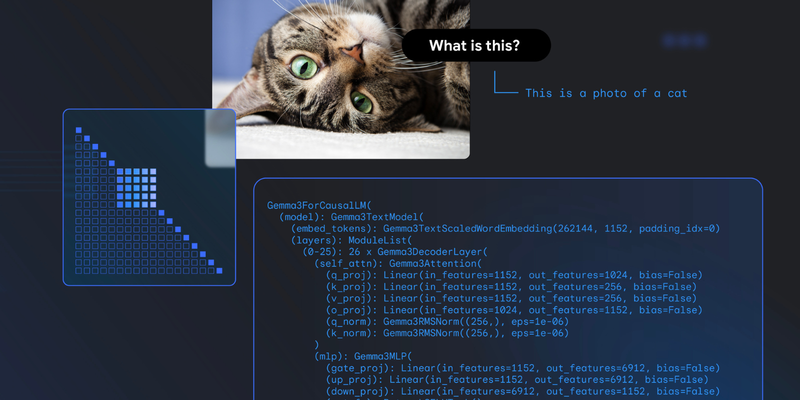
Gemma's Multilingual Mirage: Why Google's 'Slow' Release Cycle is Actually Winning
Debunking the myth that Google's Gemma models are lagging behind, and exploring how their multilingual capabilities are quietly dominating the AI landscape.
The perception that Google’s Gemma models are stuck in development hell couldn’t be further from the truth. While developers complain about the “35-year wait” between releases, Google has been quietly building something remarkable: genuinely multilingual AI that doesn’t just translate between languages, but understands them.
The Release Schedule That Fooled Everyone
When developers recently lamented that it’s been a long time since Google released a new Gemma model, they weren’t wrong, they were just looking in the wrong direction. The reality is that Google has released 14 different Gemma variants since February 2024, including specialized models like MedGemma, VaultGemma, and the recently launched EmbeddingGemma.
The “slow” perception stems from comparing Gemma’s release cadence to the firehose of models from competitors. But here’s the secret: Google isn’t playing the same game. While others chase parameter counts, Gemma’s evolution focuses on something more valuable, practical multilingual capability.

The Portuguese Breakthrough That Changed Everything
The real story emerges from user testimonials. One developer specifically praised Gemma 3 4B for being super coherent in Portuguese (not just in English and Chinese), a capability that’s become the holy grail for non-English AI applications.
This isn’t just about adding another language to the training mix. Gemma’s architecture, particularly the recent EmbeddingGemma model, demonstrates something revolutionary: true cross-lingual understanding rather than simple translation. The model achieves state-of-the-art results on the Massive Text Embedding Benchmark (MTEB) across multilingual, English, and code domains, outperforming models nearly double its size.
EmbeddingGemma: The Multilingual Powerhouse You Missed
The recently released EmbeddingGemma technical paper ↗ reveals why Gemma’s approach is so effective. Unlike models that treat multilingual capability as an afterthought, EmbeddingGemma was designed from the ground up for cross-lingual performance.
The model’s training recipe includes encoder-decoder initialization and geometric embedding distillation, allowing it to capture nuanced linguistic patterns across 250+ languages. But the real magic is in the evaluation results: EmbeddingGemma ranks #1 across all MTEB aggregate metrics for models under 500M parameters, with particularly strong performance in low-resource languages.

Why Multilingual Performance Actually Matters
The obsession with English-language benchmarks has created a distorted view of AI progress. While models like LLaMA 3 excel at English tasks, their performance drops dramatically when faced with languages like Portuguese, Hindi, or Swahili.
Gemma’s approach addresses a fundamental problem: 80% of the world’s population doesn’t speak English as a first language. By prioritizing multilingual capability, Google is positioning Gemma for global relevance rather than just Western markets.
The numbers tell the story. On the XTREME-UP benchmark, which tests performance across 20 underrepresented languages, EmbeddingGemma achieves an average MRR@10 score of 47.7, vastly outperforming models with billions more parameters. For languages like Bhojpuri and Garhwali, the gap is even more dramatic.
The Trade-Off Everyone Ignores
Here’s the controversial truth: Gemma’s “slow” release cycle isn’t a bug, it’s a feature. While competitors rush to release larger models, Google is optimizing for something more valuable: deployment efficiency.
EmbeddingGemma demonstrates this perfectly. The 308M parameter model delivers performance comparable to 600M+ parameter competitors while being significantly cheaper to run. This makes it ideal for on-device applications and scenarios where data privacy matters.
The model’s Matryoshka Representation Learning ↗ capability allows developers to truncate embeddings to 128, 256, or 512 dimensions without retraining, a game-changer for resource-constrained applications.
What This Means for the AI Landscape
The Gemma evolution suggests a fundamental shift in how we should evaluate AI progress. Parameter count and benchmark scores tell only part of the story. The real metric that matters is practical utility across diverse linguistic contexts.
As one developer noted, Gemma 3 4B became their “smart home LLM of choice” specifically because of its multilingual capabilities. This real-world adoption is more telling than any benchmark score.
The recent focus on specialized models like EmbeddingGemma, MedGemma, and VaultGemma indicates where Google is heading: domain-specific multilingual AI that works reliably across languages without requiring massive computational resources.
The Future is Multilingual (Whether We’re Ready or Not)
The AI community’s English-centric focus is starting to look increasingly outdated. As ToolJunction’s analysis of open-source LLMs ↗ notes, Gemma 2’s “good multilingual capabilities” set it apart in a crowded field. But EmbeddingGemma takes this several steps further, demonstrating that smaller, more efficient models can outperform larger ones when designed with multilingual capability as a primary goal.
The next frontier isn’t bigger models, it’s smarter multilingual models. Gemma’s evolution suggests Google understands this better than most. While developers complain about release schedules, they’re missing the bigger picture: Google is building AI that actually works for the global population, not just English speakers.
The “slow” release cycle isn’t a sign of stagnation, it’s evidence of deliberate, thoughtful development focused on solving real problems rather than chasing headlines. In the race to build useful AI, that might be the most valuable approach of all.



